Gallery: A World of Kepler Planets
Real-Life Tatooine Planet
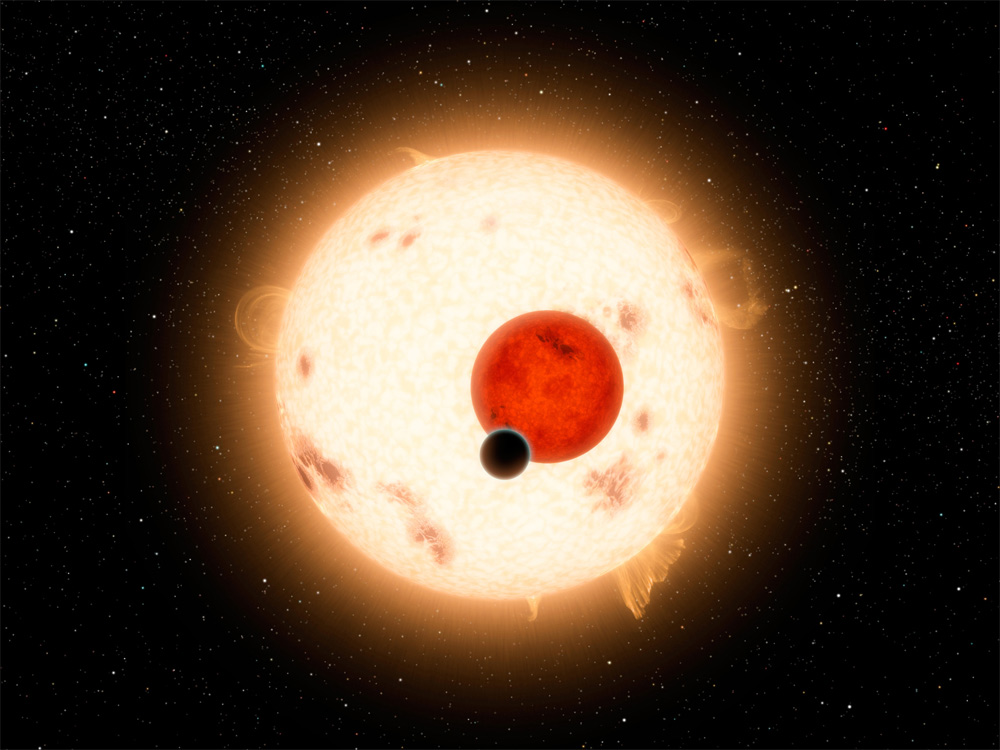
NASA's Kepler mission has discovered a world where two suns set over the horizon instead of just one. The planet, called Kepler-16b, is not thought to be habitable. It is a cold world, with a gaseous surface, and it circles two stars, just like "Star Wars" Tatooine.
Kepler Asteroseismology — Oscillations in Sun-like Stars
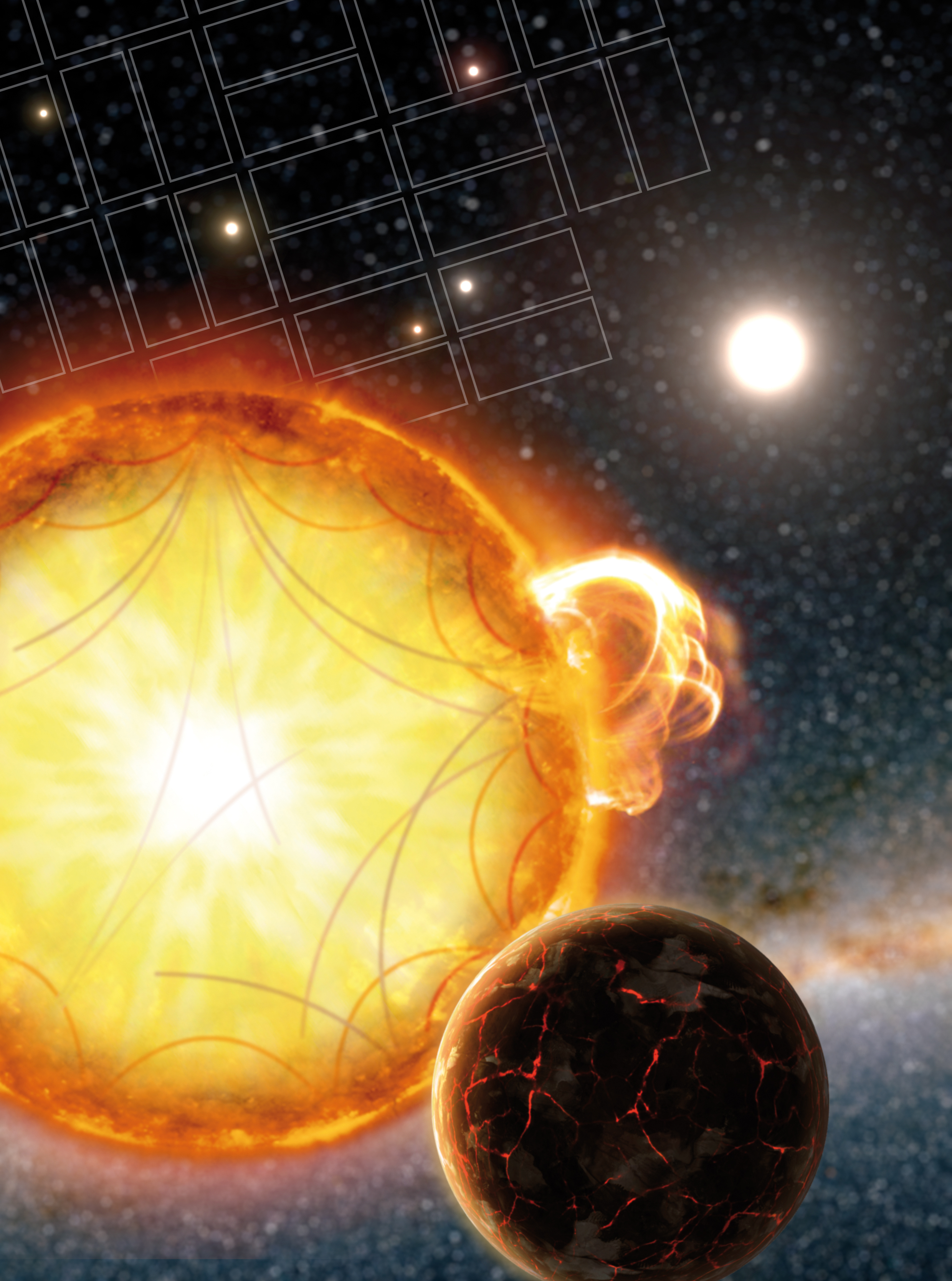
NASA's planet-hunting Kepler spacecraft has observed brightness oscillations in more than 500 sun-like stars. The white-line grids represent the field of view on the sky of the Kepler detectors.
Kepler Telescope Could Find Habitable Moons
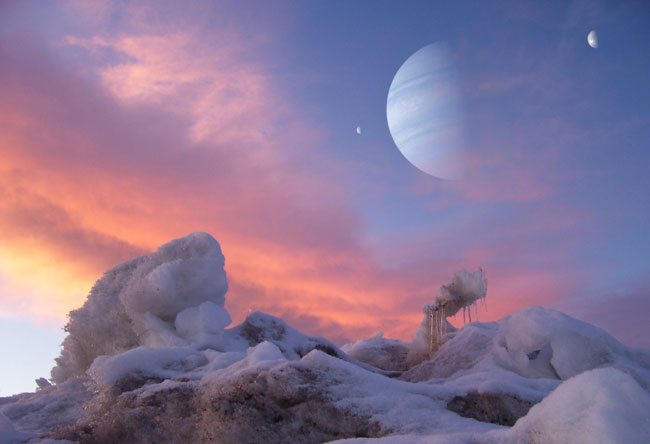
This artist rendering shows the view from a hypothetical habitable exomoon in orbit around Jupiter- and Saturn-like worlds.
Kepler Planet-Hunting Mission Finds 5 New Lightweight Worlds
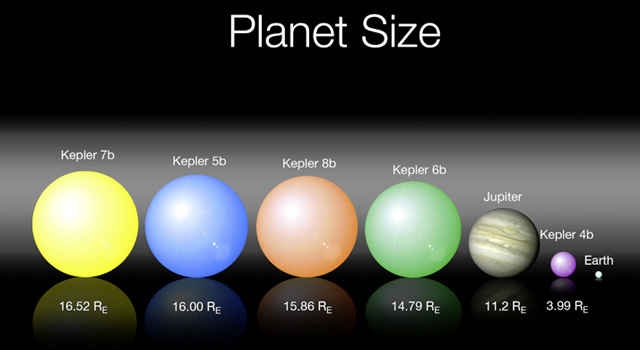
This illustration depicts the relative sizes of five newfound extrasolar planets discovered by NASA's Kepler spacecraft as they compare to Jupiter and the Earth.
Kepler Alien Planet Sizes
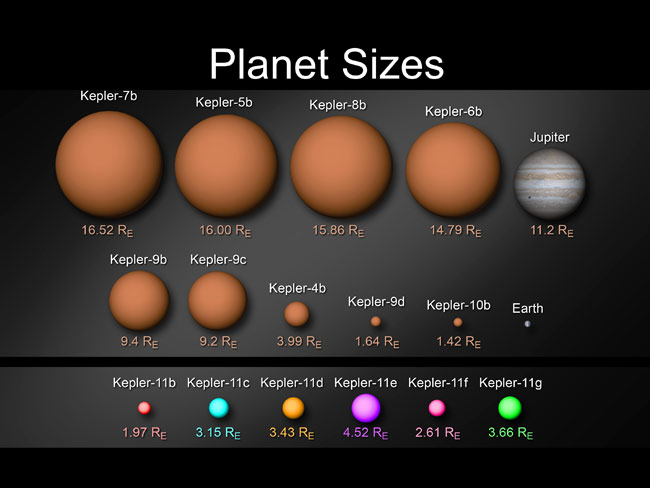
A diagram showing the relative sizes of the new alien planets discovered by Kepler, compared to Earth and Jupiter.
Illustration of Kepler Alien Planet Candidates and Their Host Stars
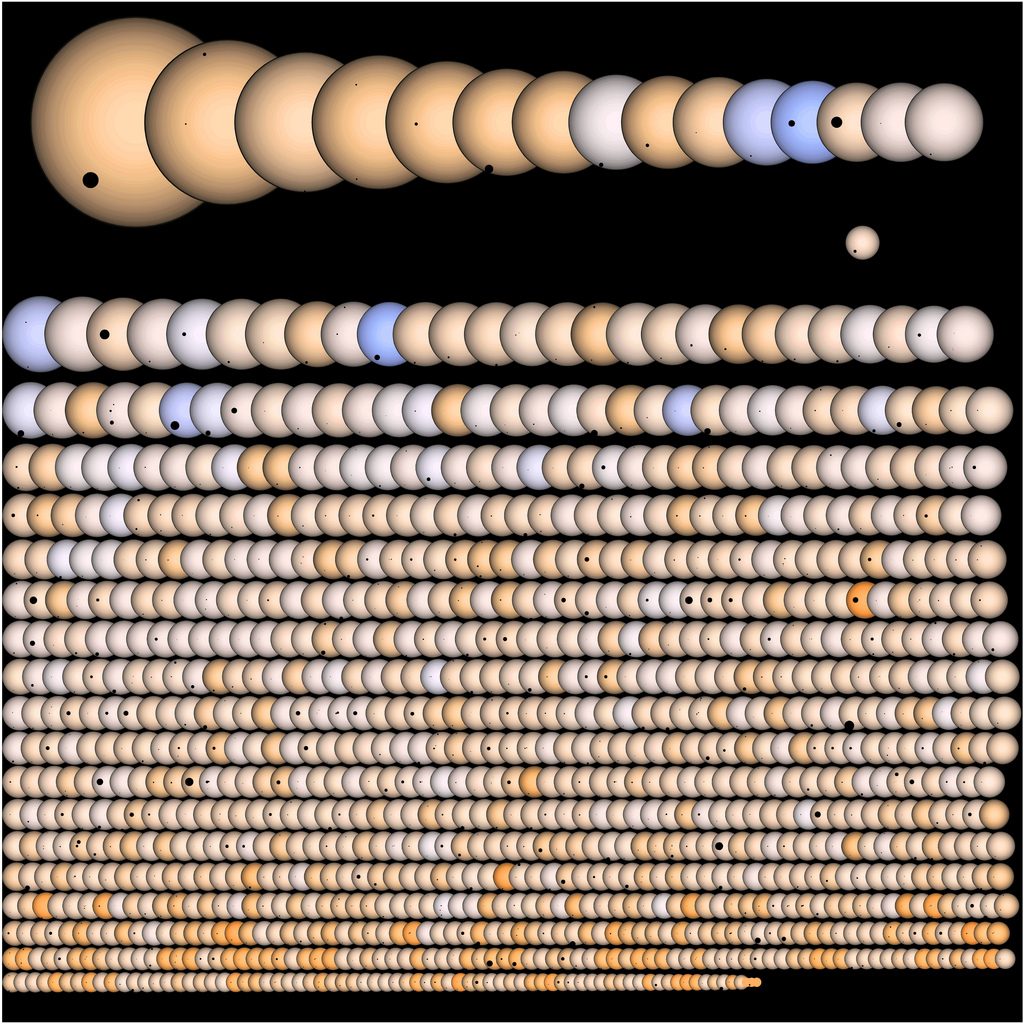
This illustration shows all 1,235 of the potential alien planet candidates NASA's Kepler mission has found to date. The planets are pictured crossing front of their host stars, which are all represented to scale.
Kepler Finds Multiple Planet Systems
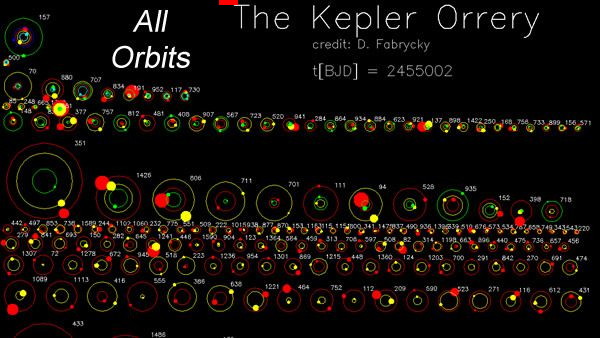
NASA's Kepler spacecraft has discovered 170 planetary systems containing between two and six transiting planets. This graphic shows all the multiple-planet systems discovered by Kepler as of 2/2/2011; orbits go through the entire mission (3.5 years). Hot colors to cool colors (red to yellow to green to cyan to blue to gray) indicate big planets to smaller planets, relative to the other planets in the system.
Get the Space.com Newsletter
Breaking space news, the latest updates on rocket launches, skywatching events and more!
Sizes of Red Giant Stars
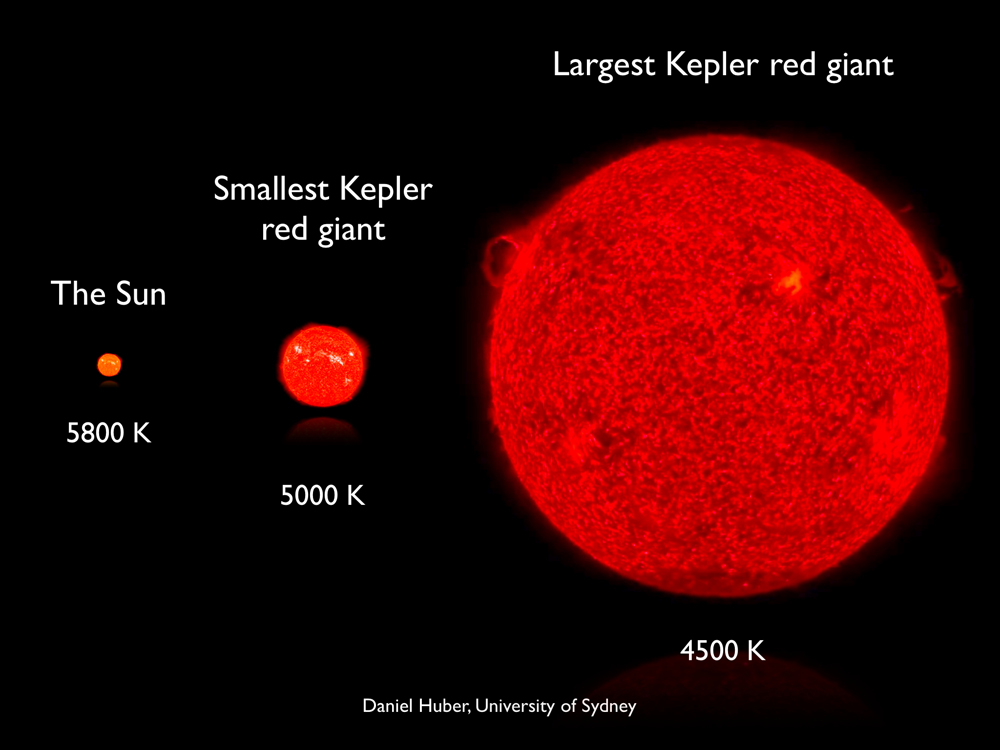
Sizes of red giant stars compared to the Sun. Using the Kepler telescope, we have detected oscillations in hundreds of red giant stars. The periods of those oscillations allowed us to study the interiors of these giant stars, which represent the future life of our Sun.
Twin Sun Planet Kepler 35b: Lior Taylor
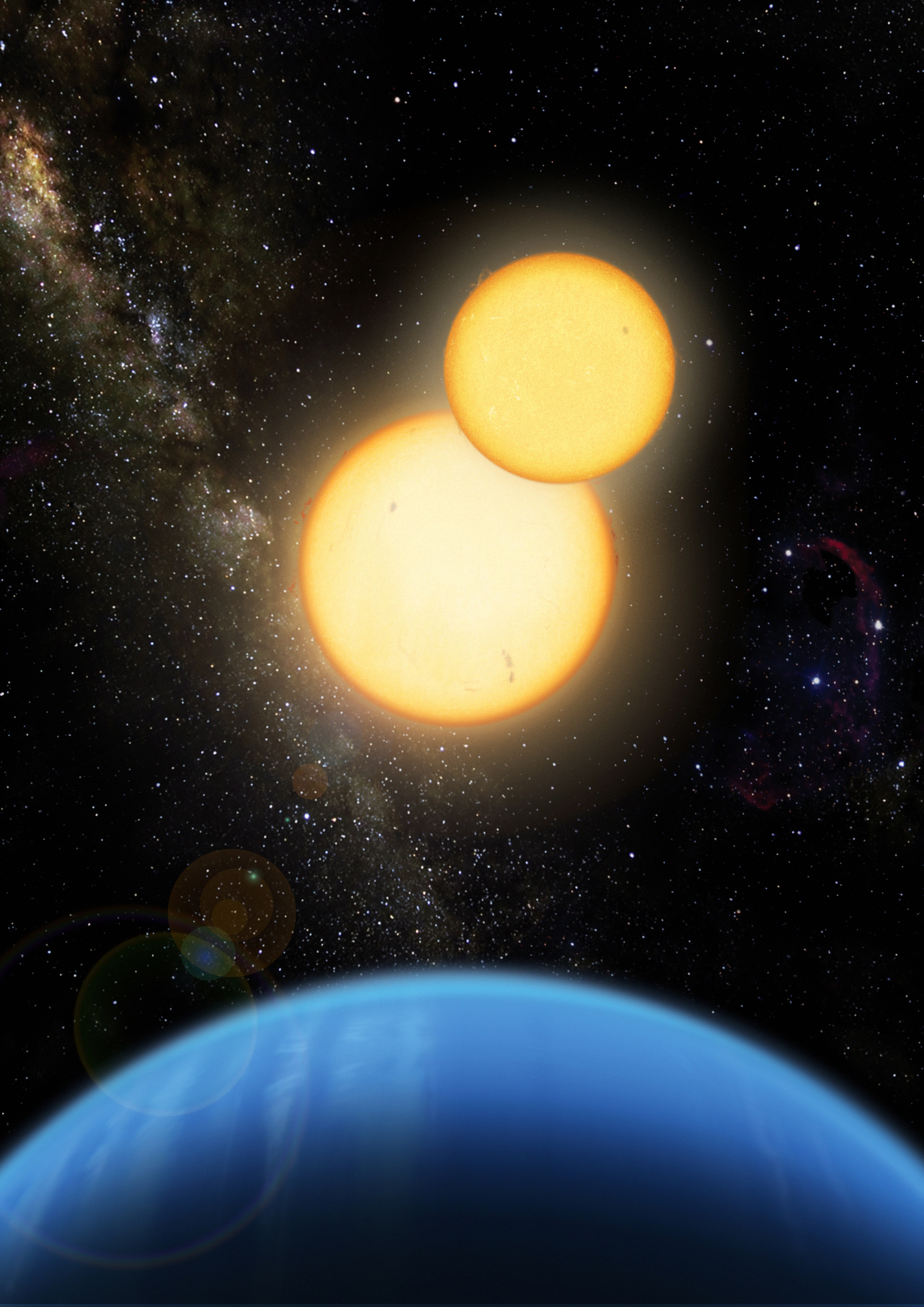
An artist's illustration of Kepler-35 b, a Saturn-size planet around a pair of sun-size stars, as envisioned by artist Lior Taylor. The discovery of Kepler-35b and another twin sun planet, Kepler-34 b, was announced Jan. 11, 2012 and represent a new class of circumbinary planets.
Join our Space Forums to keep talking space on the latest missions, night sky and more! And if you have a news tip, correction or comment, let us know at: community@space.com.

Space.com is the premier source of space exploration, innovation and astronomy news, chronicling (and celebrating) humanity's ongoing expansion across the final frontier. Originally founded in 1999, Space.com is, and always has been, the passion of writers and editors who are space fans and also trained journalists. Our current news team consists of Editor-in-Chief Tariq Malik; Editor Hanneke Weitering, Senior Space Writer Mike Wall; Senior Writer Meghan Bartels; Senior Writer Chelsea Gohd, Senior Writer Tereza Pultarova and Staff Writer Alexander Cox, focusing on e-commerce. Senior Producer Steve Spaleta oversees our space videos, with Diana Whitcroft as our Social Media Editor.









